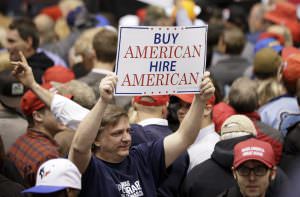C. Wright Mills Understood Why We’re So Lame
In the 1950s, as the United States transitioned from a factory- to an office-based economy, the sociologist perceived that "if you wanted to find out what was wrong with American society and politics, you had to look to the white-collar worker," writes Nikil Saval in The Chronicle of Higher Education.
In the 1950s, as the United States transitioned from a factory- to an office-based economy, the sociologist perceived that “if you wanted to find out what was wrong with American society and politics, you had to look to the white-collar worker,” writes Nikil Saval in The Chronicle of Higher Education.
In Saval’s words, Mills’ book, “White Collar: The American Middle Classes,” inaugurated the study of how the American office place shapes employees, and by extension, society. “Even if we are not all white-collar workers now, white-collar work has become central to social life in ways so ubiquitous as to be invisible.”
The more Mills “looked at white collar workers, the more he saw that their work made their lives qualitatively different from those of manual workers. Where manual workers exhibited relatively high rates of unionization—solidarity, in other words—white-collar workers tended to rely on themselves, to insist on their own individual capacity to rise through the ranks—to keep themselves isolated. The kind of work they did was partly rationalized, the labor divided to within an inch of its life. Mills constantly emphasized the tremendous growth of corporations and bureaucracies, the sheer massiveness of American institutions—words like ‘huge’ and ‘giant’ seem to appear on every page of his book. At the same time, so much of their work was incalculably more social than manual labor, a factor that particularly afflicted the roles afforded to female white-collar workers: Salesgirls had to sell their personalities in order to sell their products; women in the office were prized as much for their looks or demeanor as for their skills or capabilities.”
In the course of his thinking, Mills recognized that psychological instability was the hobgoblin of white collar workers, whereas blue collar workers faced the wear and tear of their bodies.
Mills wrote: “The new Little Man seems to have no firm roots, no sure loyalties to sustain his life and give it a center. He is not aware of having any history, his past being as brief as it is unheroic; he has lived through no golden age he can recall in time of trouble. Perhaps because he does not know where he is going, he is in a frantic hurry; perhaps because he does not know what frightens him, he is paralyzed with fear. This is especially a feature of his political life, where the paralysis results in the most profound apathy of modern times.”
Of that passage Naval observes: “It was a tremendously forceful, powerfully bleak assessment of the situation, delivered with the sort of pungency and mercilessness that made Mills one of the most distinctive stylists of his time. In Mills’s view, if you wanted to find out what was wrong with American society and politics, you had to look to the white-collar worker. And if you were honest with yourself, what you saw would explain why American politics had drifted into such a deadly passivity, such a frenzied and unholy stasis. In the finest tradition of social critique, the book was directed against its day, and it spoke in the accents, the shaggy, bearded tenor, of genuine prophecy; it was sociology that sought the status of literature.”
Read more of Naval’s comment on Mills’ insights here.
— Posted by Alexander Reed Kelly.
Your support matters…Independent journalism is under threat and overshadowed by heavily funded mainstream media.
You can help level the playing field. Become a member.
Your tax-deductible contribution keeps us digging beneath the headlines to give you thought-provoking, investigative reporting and analysis that unearths what's really happening- without compromise.
Give today to support our courageous, independent journalists.




You need to be a supporter to comment.
There are currently no responses to this article.
Be the first to respond.